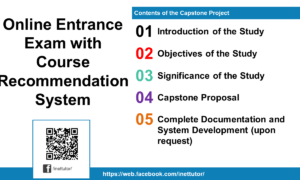Pet shop Management System Free Download Bootstrap Template
Table of Contents
The capstone project entitled “Pet Shop Management System” is a system that allows pet shops to electronically manage their daily transactions. The system will automate keeping of pet records, inventory, billing, services and products and other transactions of the shop.
This article will provide you with an idea on what are the forms to be included in a Pet Shop Management System. PHP and Bootstrap were used to develop the said template.
Documentation of the project is available upon request (chapters 1 to 5). Feel free to message us for the complete documentation of the project.
Project Highlights
The project “Pet Shop Management System” is a database driven system that will automate the processes in managing records of transaction made in the shop. The system will help in providing accurate and secure record management.
Advantages of the Pet Shop Management System are the following:
- Automated Business process- records management, billing transaction and report generation is much easier to process and completed
- Records Management – it is a database system which makes the records electronic, safe, accurate, reliable and fast.
- Report Generation – The systems automatically generate and provide real-time reports on billing and income.
How the System Works
This section will discuss the flow of the system by showing the forms, modules and user interface of the Pet Shop Management System.
Login Form– this form will be used by the administrator, customers and vendors of the system. Each of the users will have their unique username and password to be able to access the records and features of the system.
The user will need to enter a valid username and password.
The image shown below is the design of the Log in Form.
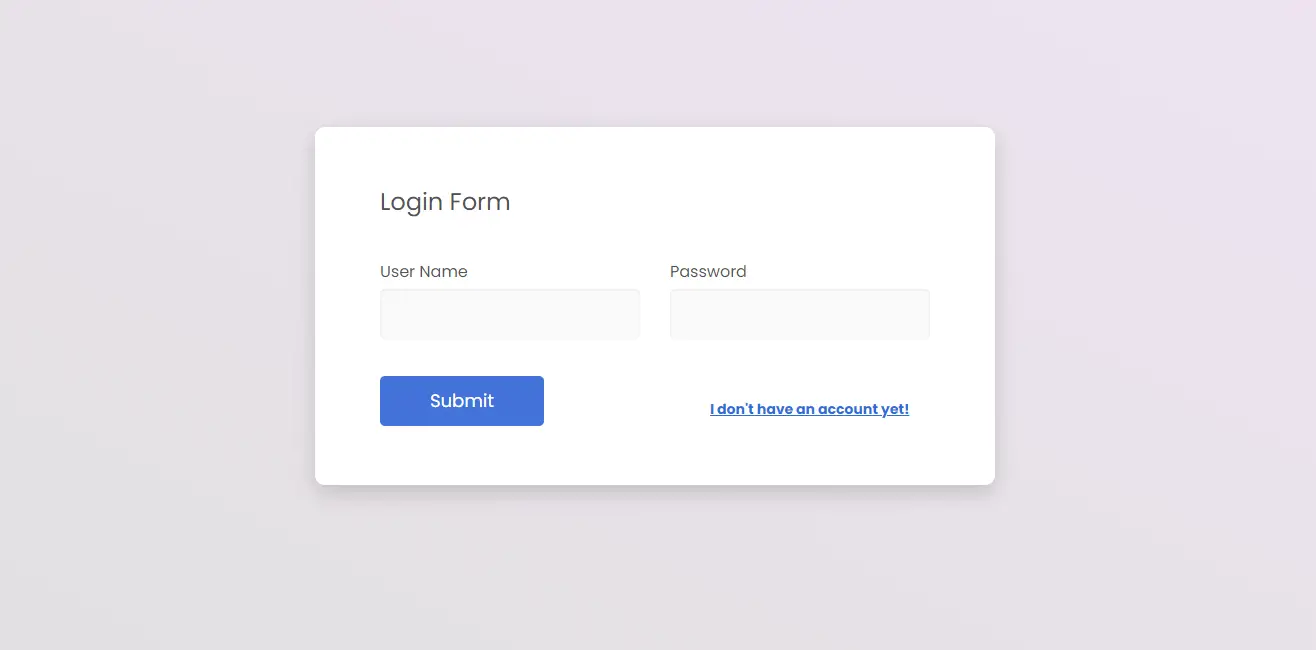
Client Registration Form – this form will require the information about the clients. The following information mentioned below needs to be encoded in the system. Customer or client will need to enter the information below since all of the fields are required.
- First name
- Middle name
- Last name
- Complete Address
- Contact number
- Email address
- Gender
- Civil Status
- Birthdate
- Age
- Profile Picture
- Username
- Password
The image shown below is the design of the Client Registration form.
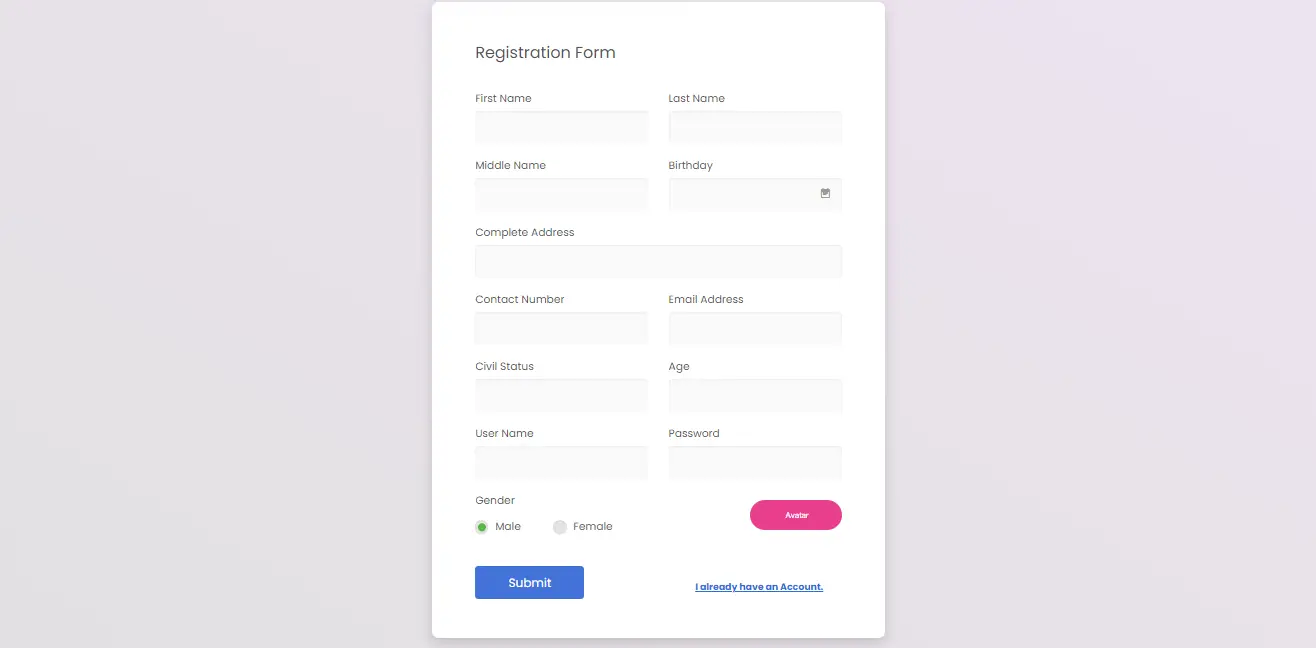
Administrator Account Module
Admin Dashboard – the dashboard serves as the homepage of the administrator that display the following information. this is the form that will open after the admin has successfully logged-in.
- number of Pets – number of pets encoded or registered in the system.
- number of Pet Products – number of pet products available that are encoded in the system.
- number of vendors – number of vendors registered in the system.
- Income – the system displays the total income of the shop.
The image shown below is the design of the admin dashboard.
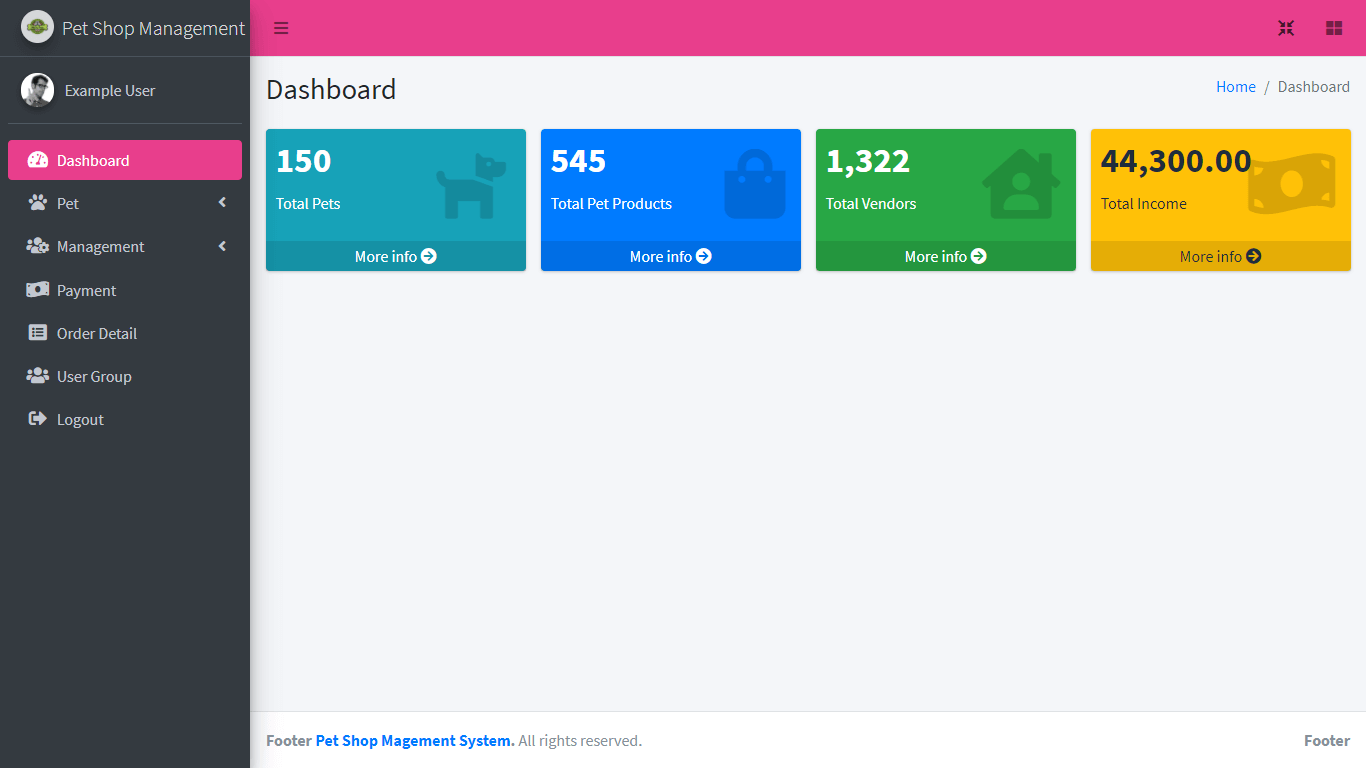
Client Management Form – the administrator of the system can access this module. The admin needs to enter or input the following details of the clients in this module.
- First name
- Middle name
- Last name
- Complete Address
- Contact number
- Email address
- Gender
- Civil Status
- Birthdate
- Age
- Profile Picture
- Username
- Password
- Account Status
The image shown below is the layout of the client management form.
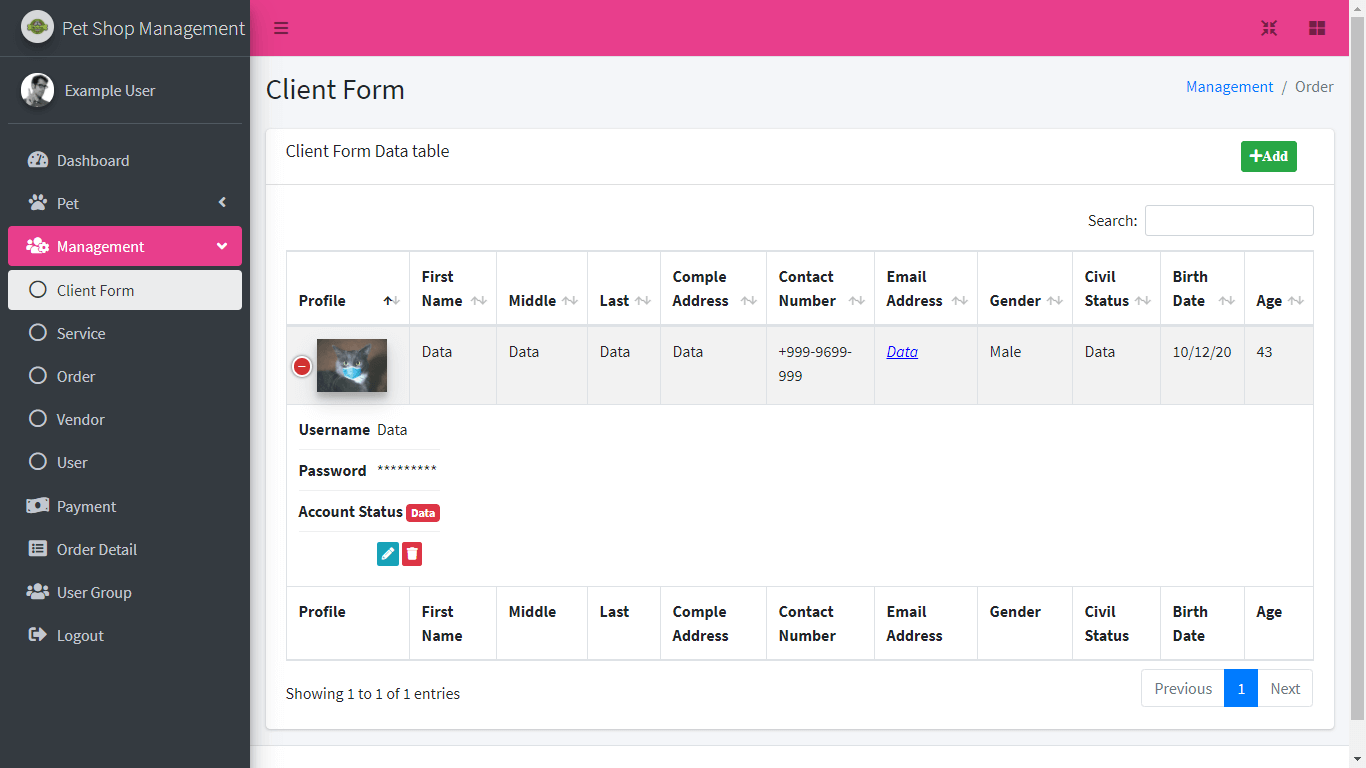
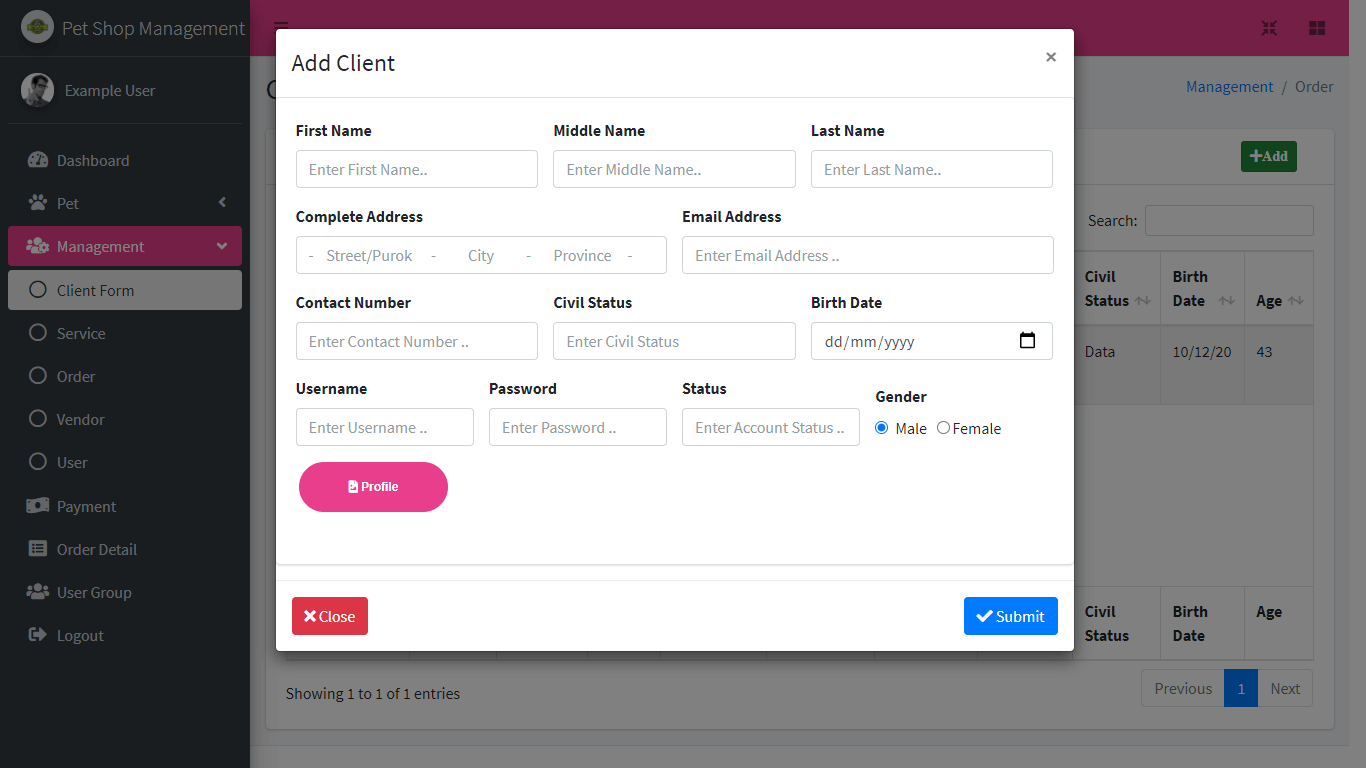
Pet Category –this is where the client’s pet category is encoded in the system.
- Category name – (ex. Dog, cat, )
The image shown below is the design of the pet category form.
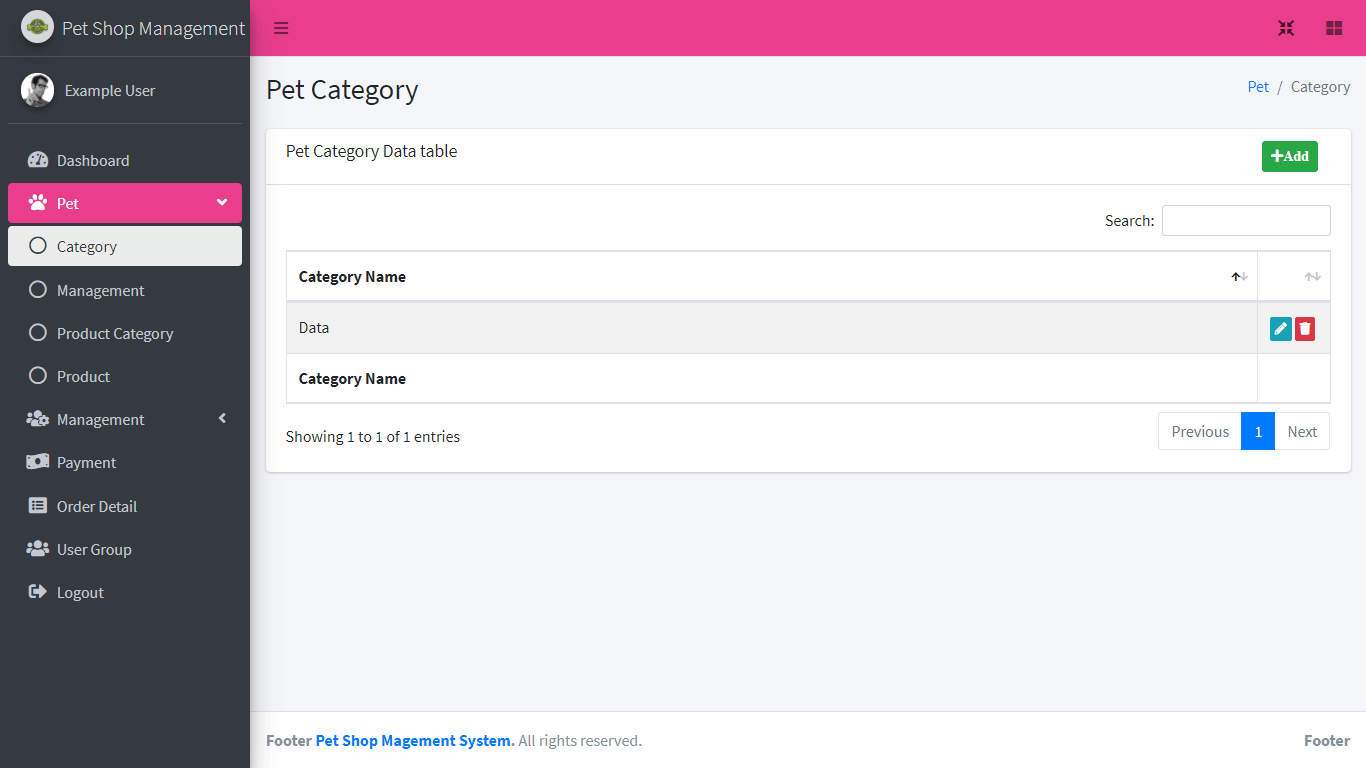
Pet Management – the pet management module requires encoding the following details in the system.
- Pet Description – the description of the pet and the specific breed if applicable
- Pet Category – combo box – options for the category of pets
- Vendor – combo box – options for vendors
- Pet Image
- Pet Status
The image shown below is the design of the Pet Management module in the system.
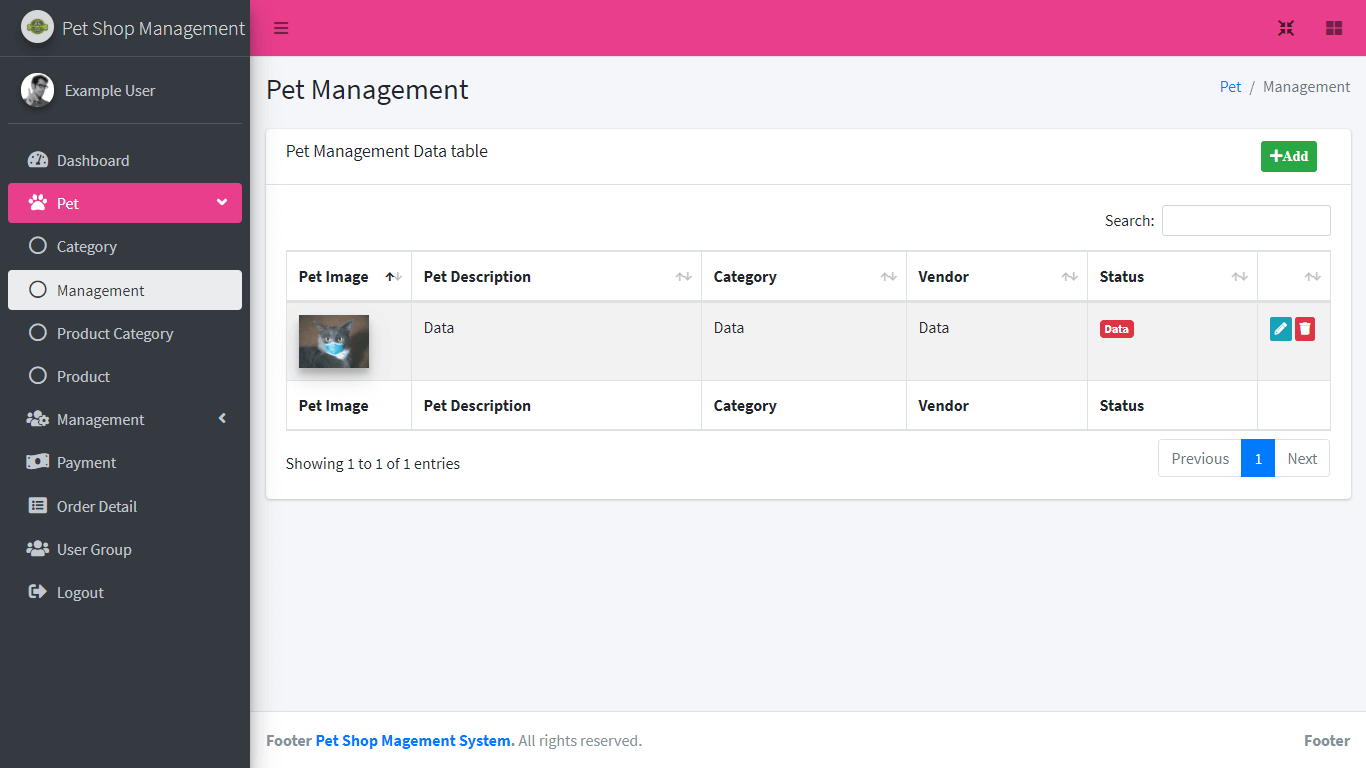
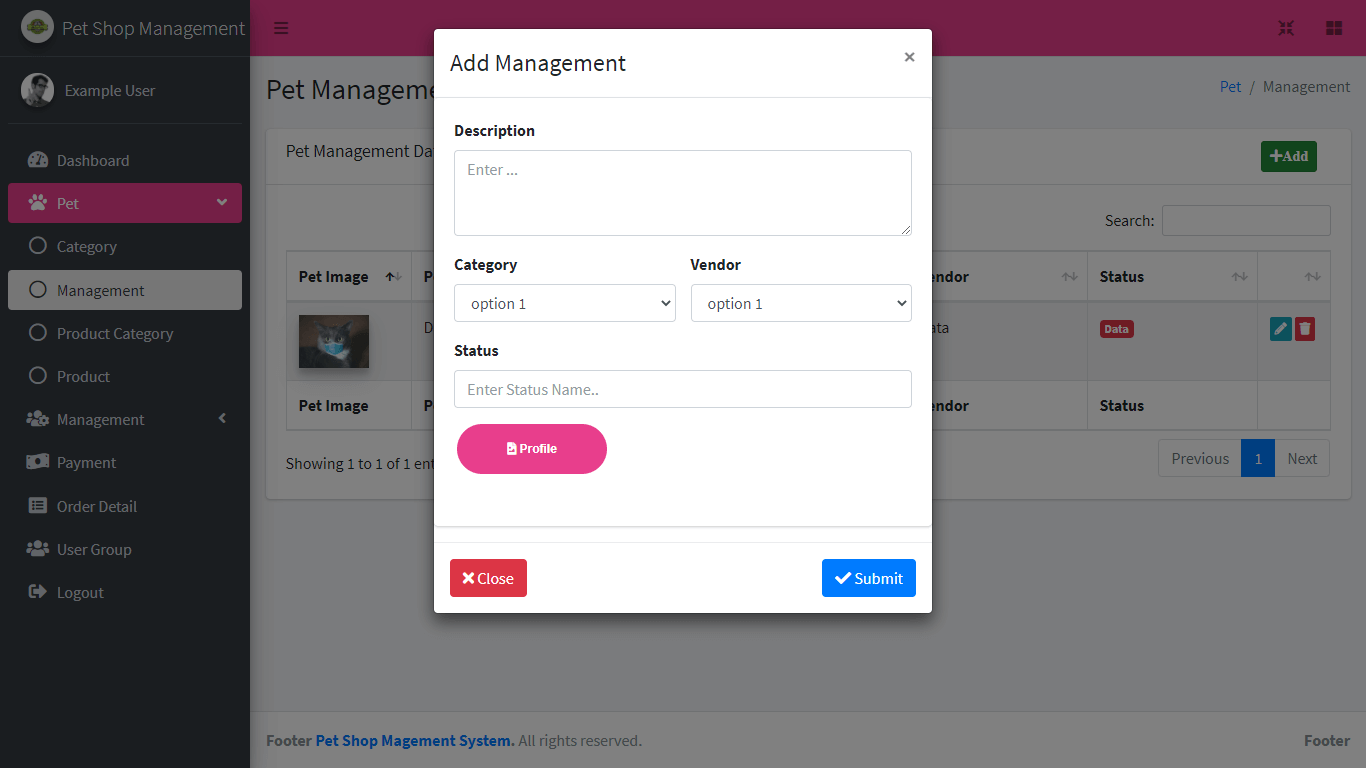
Pet Product Category – this is a form where product categories are encoded.
- Category name – (ex. Pet food, Pet beds, Pet dental care)
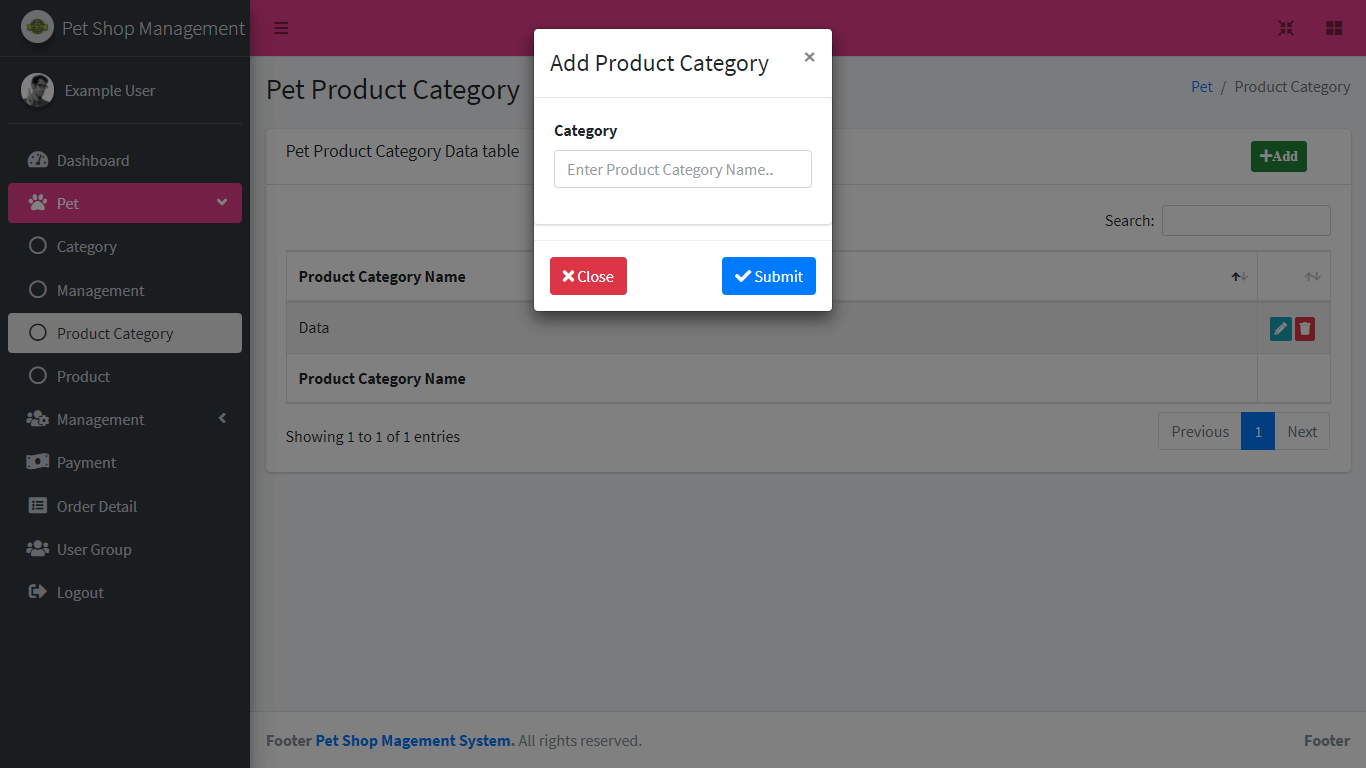
The image shown below is the design for the pet category form.
Pet Product – this form requires the following information about the product.
- Product code – unique code of the products
- Product name
- Product detail
- Product category – (ex. Pet food, pet beds, pet dental care)
- Quantity on Hand – number of available stocks
- Vendor Price – the price from the vendor
- Retail Price – the retail price of the product
- Discount – the discount percentage of the product
- Vendor – combo box
- Status
The image below is the design for the pet product form.
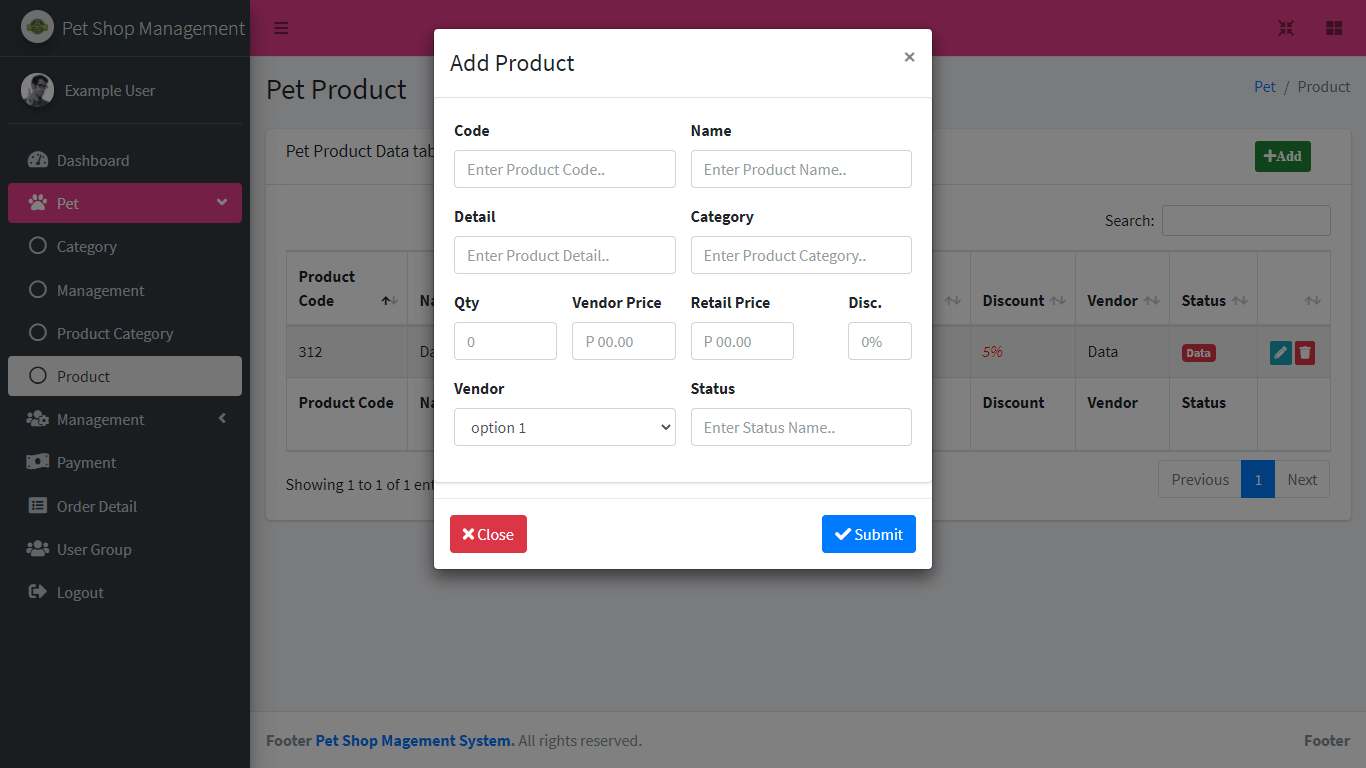
Service Management – The service management module is where the list of services are encoded and managed. Administrator or encoder will first to setup the services offered by the Pet shop.
- Reference No
- Service name – (ex. Pet grooming, Pet products, Pet care)
- Service detail
- Service fee – the price for the specific service
- Vendor – combo box
Image shown below is the user interface of the service management module of the project.
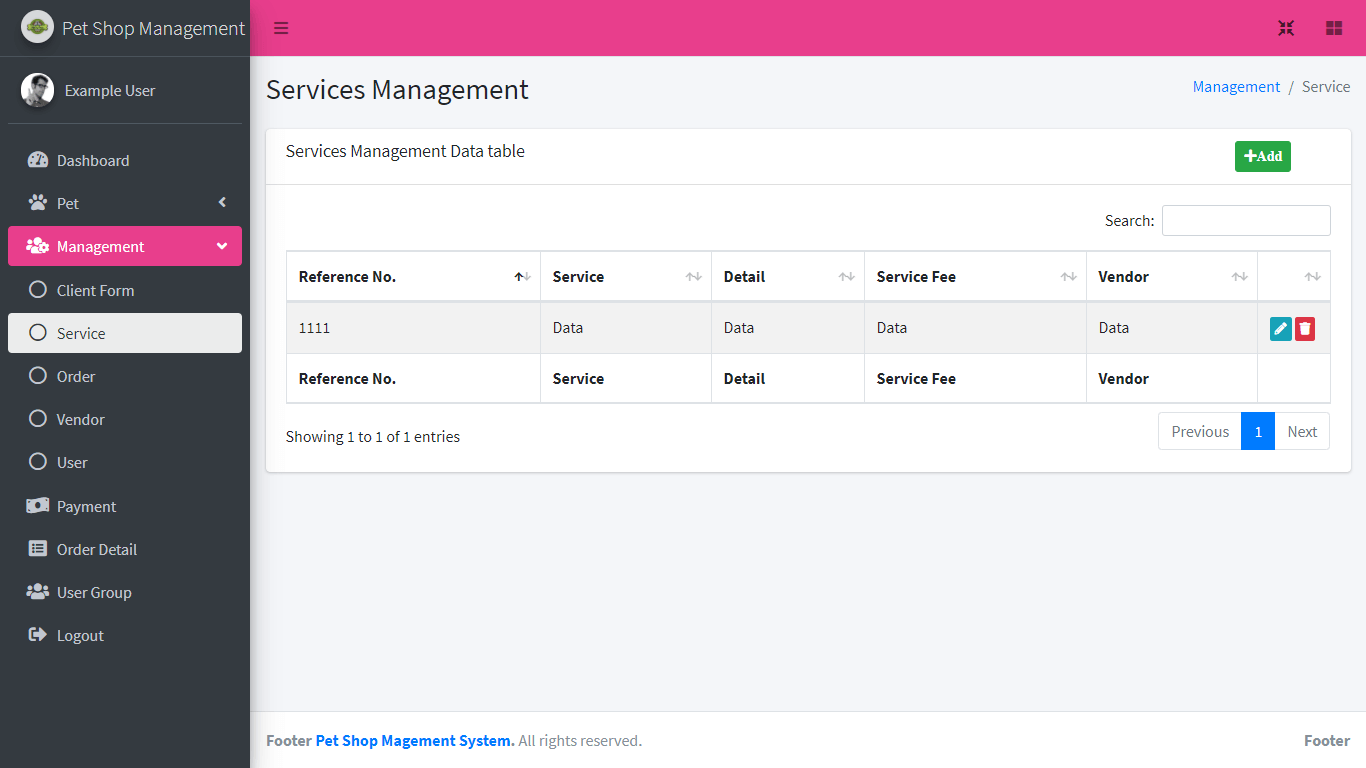
Order Management – the order management data table needs the following information to be encoded in the system.
The data that will be encoded are:
- Reference No
- Customer – combo box
- Order date – the date when the order was made
- Order Status
- Expected Delivery Date – expected delivery date of the product
- Total Amount – amount to be paid for the order
- Number of items- the number of products ordered
The image below is the layout of the order management module.
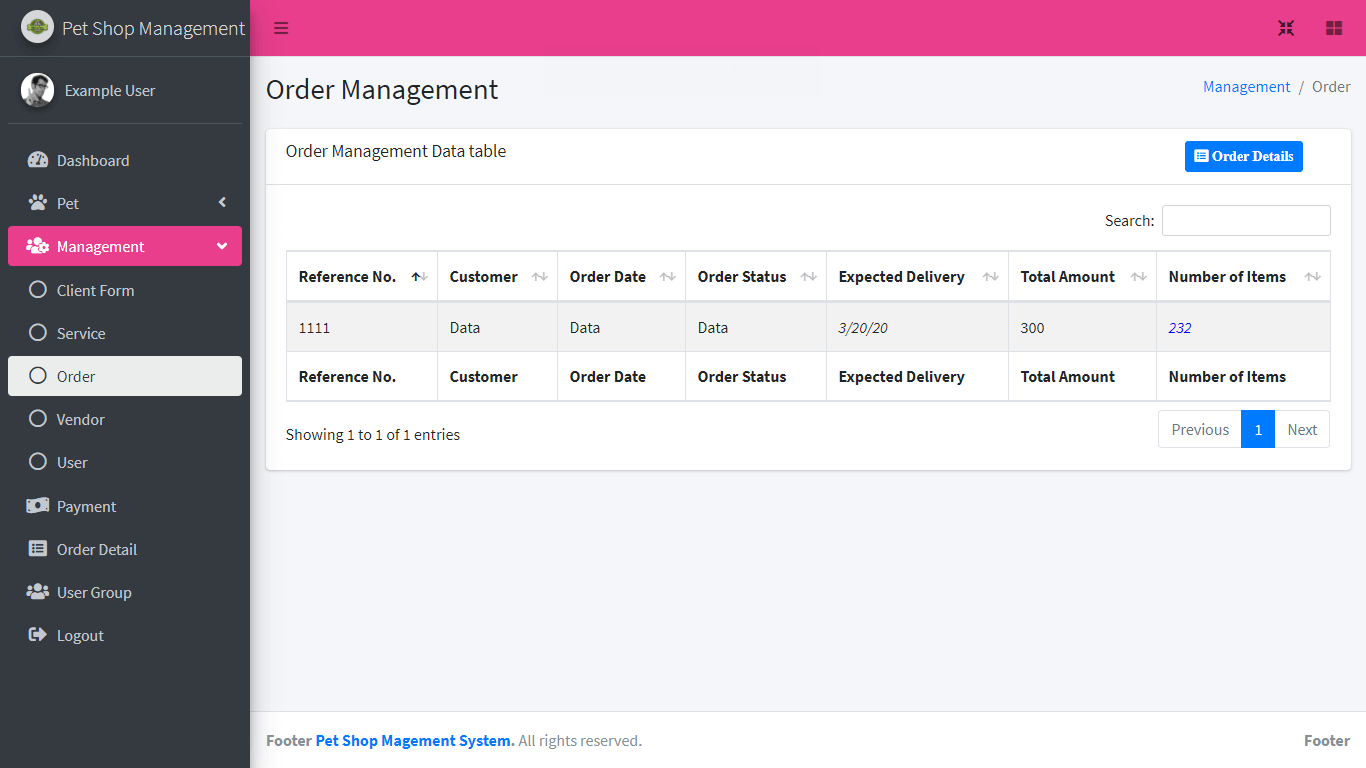
Order Detail – the order detail form will be link from the order management module containing the following details.
- Reference No
- Pet product – combo box
- Quantity
- Price
- Status
- Vendor
- Remarks
The image below is the design of the order detail form.
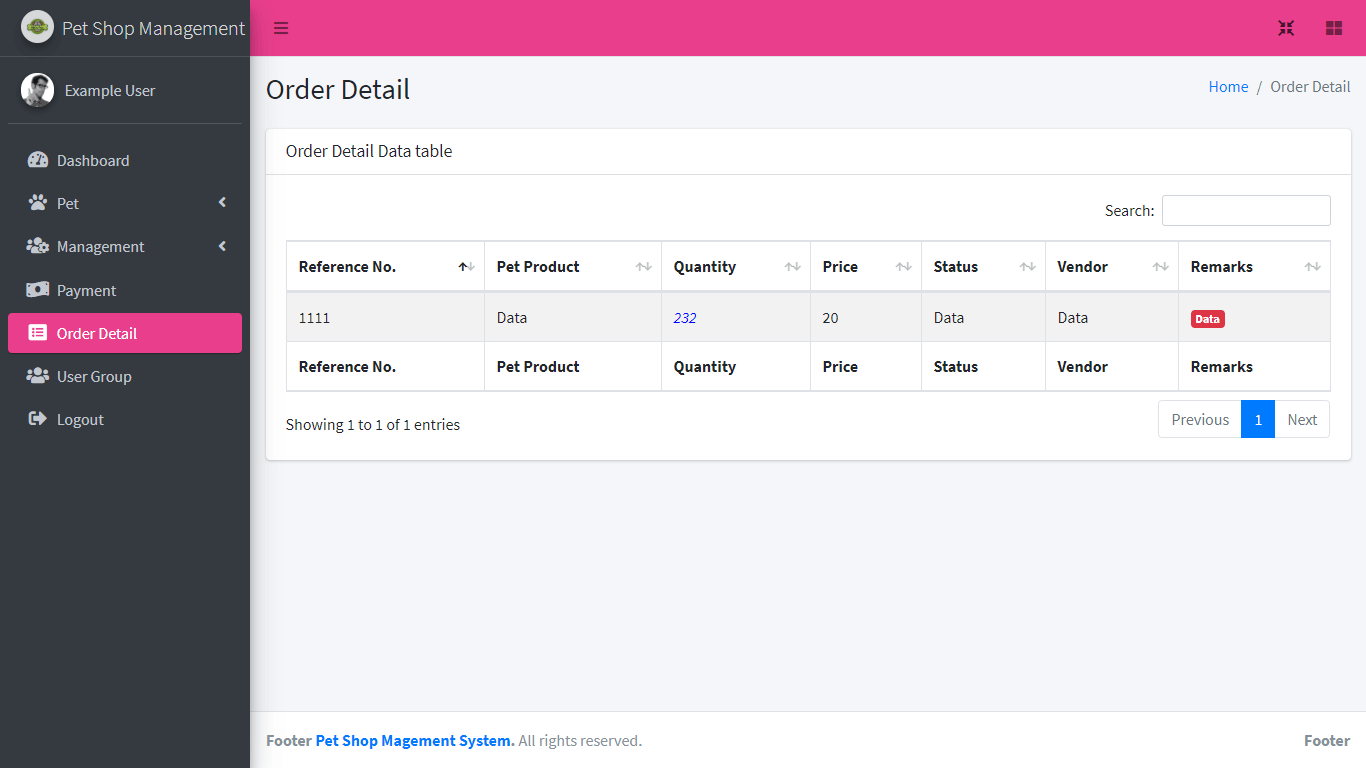
Vendor Management – the vendor management module will need to input the details about the vendors. The following information needs to be encoded in the system:
- Company name
- Company contact person
- Company email
- Company contact number
- Company website
- About the company
- Username
- Password
The image below is the layout of the vendor management module of the project.
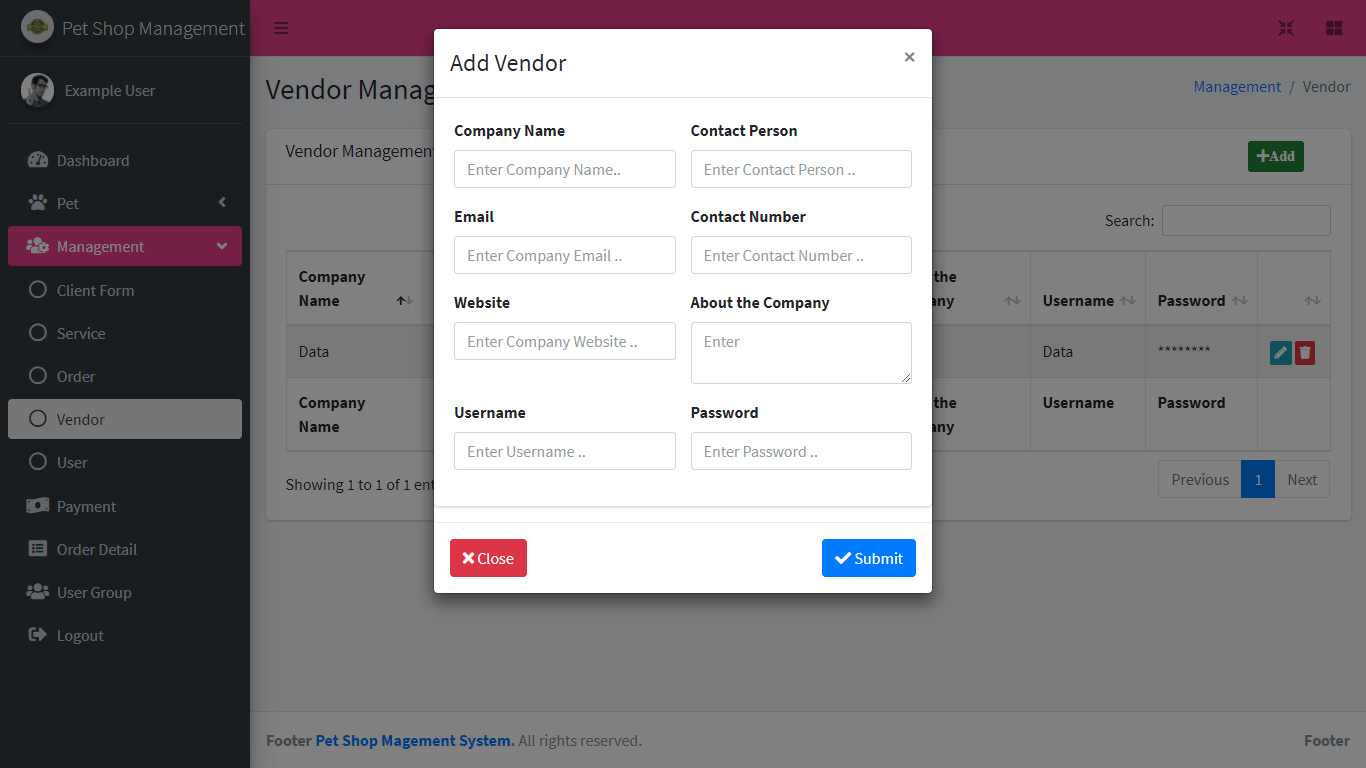
Payment– this module is used to record the payment of the customers based on the services and products availed.
The following are the detail that needs to be encoded in the payment module.
- Reference No
- Amount paid
- Remarks
- Payment Status
- Customer – combo box
- Paid By
- Processed By
The image shown below is the design of the payment module of the project.
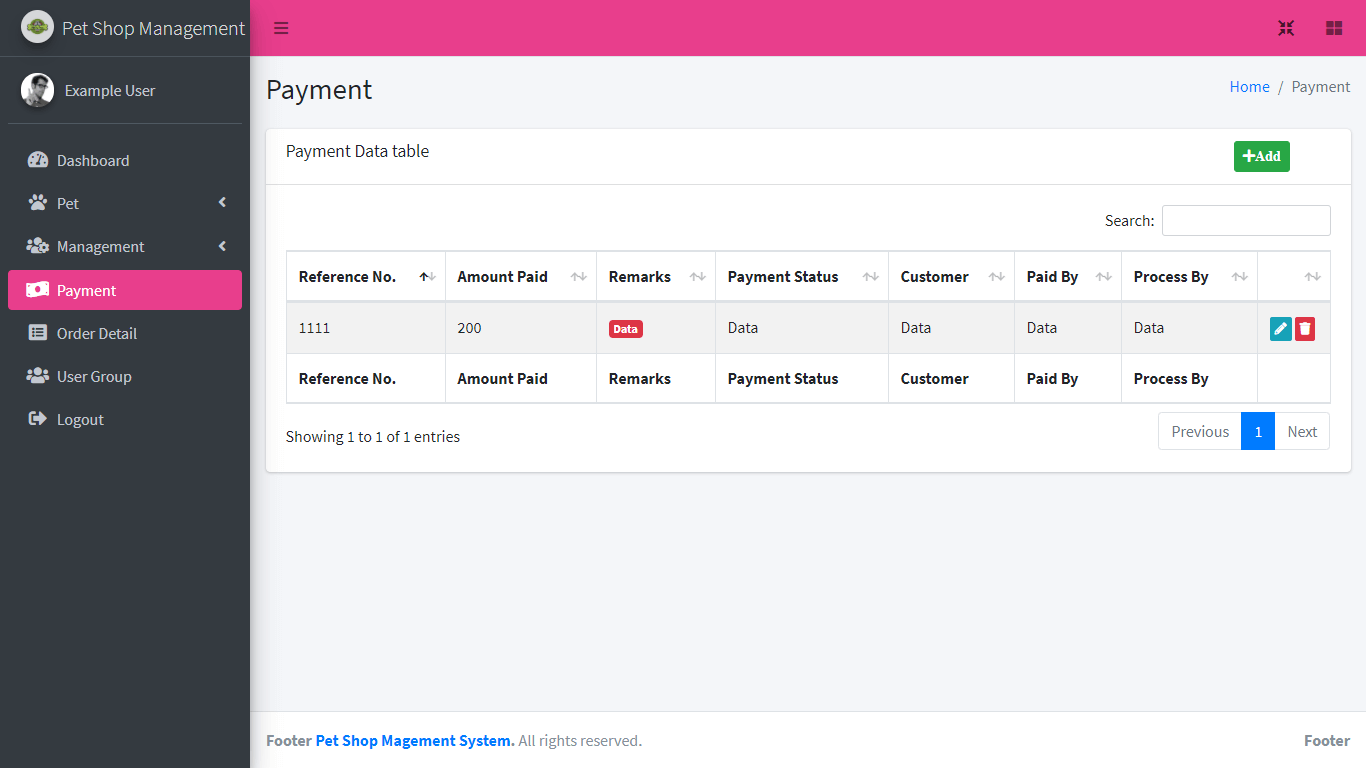
User Management – administrator can add another user account that can access the project.
User management module includes the following information:
- Fullname
- Avatar
- Username
- Password
- Contact
- User category
- Status – combo box (active, inactive)
The image below is the layout of the user management form of the project.
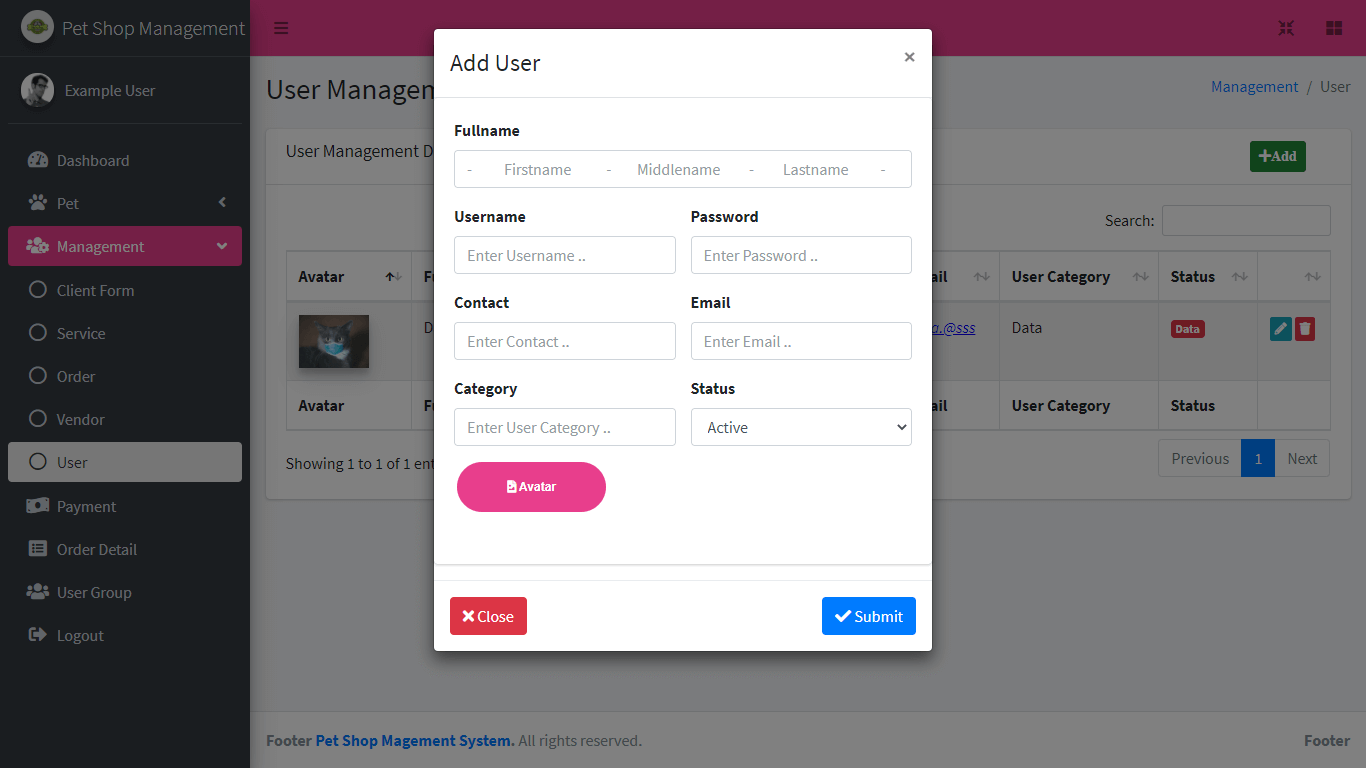
User Group– this module will allow the administrator to create a user group with uniform privileges that will be used to grant and limit the features the group can access or open.
- Group Name
- Description
- Allow_add
- Allow_edit
- Allow_delete
- Allow_print
- Allow_import
- Allow_export
Customer or Client Module
Customer Dashboard – the dashboard serves as the homepage of the customers in the system. The dashboard contains the following information.
- # of Pet – number of pets registered
- # of Pet Products – number of available products
- # Services- number of available services
The image shown below is the design of customer dashboard in the Pet Shop Management System.
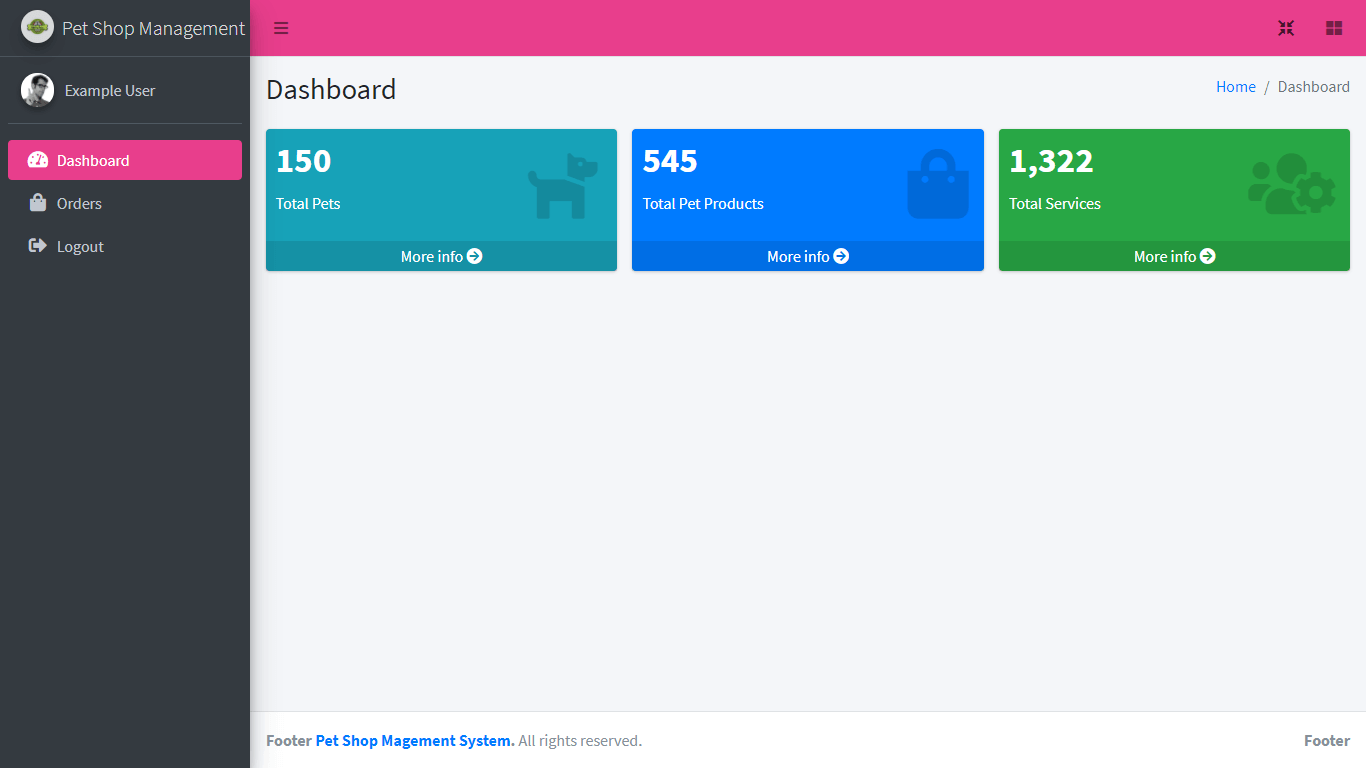
Orders – the order form need to be filled out by the customer when ordering. The order form requires the following information.
- Reference No
- Item – combo box (product item)
- Quantity – number of products ordered
- Price
- Remarks
- Status – (approved, to deliver, received, cancelled)
Image shown below is the design of the order form.
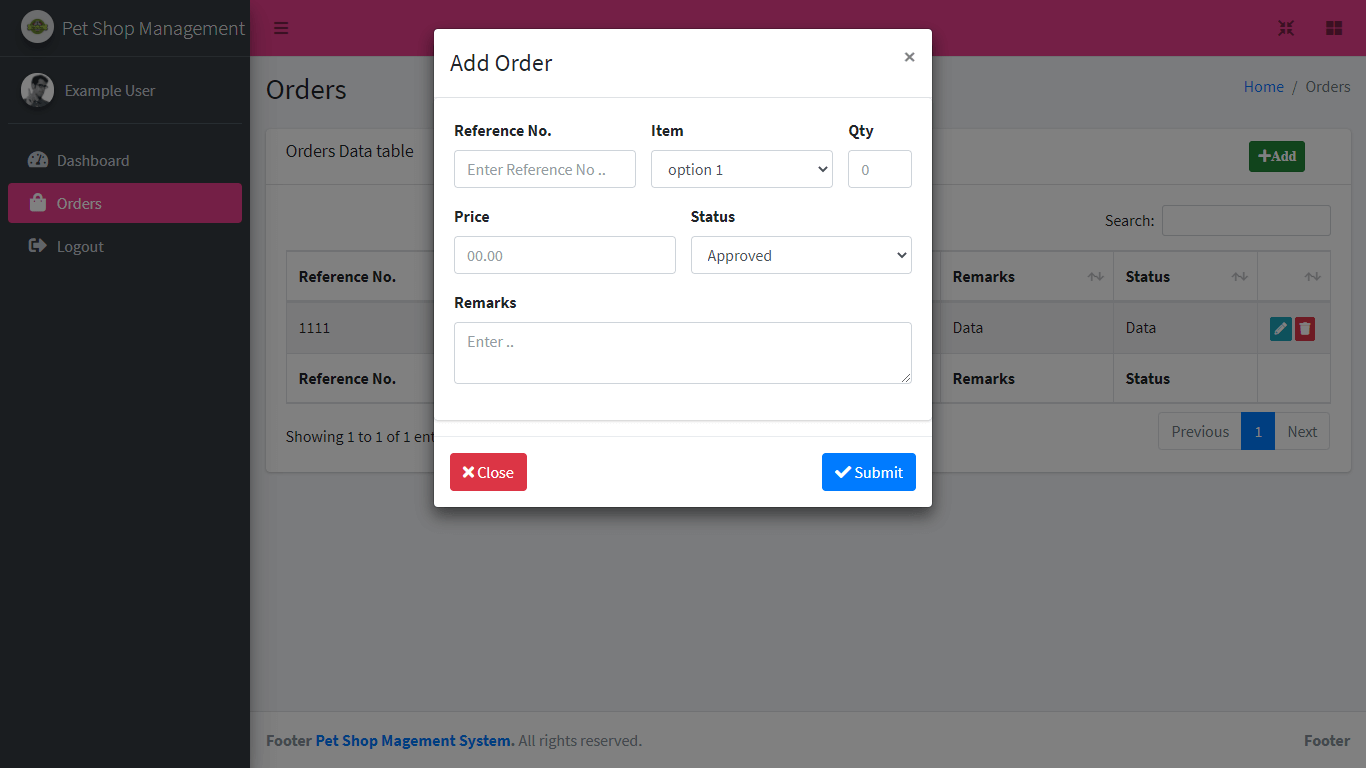
Vendor Account Module
Vendor Dashboard – the dashboard serves as the homepage of the vendors in the system.
The dashboard displays the following information:
- # of orders – number of orders made in their company
- Income – displays the total income
The image below is the layout of the vendor dashboard in the system.
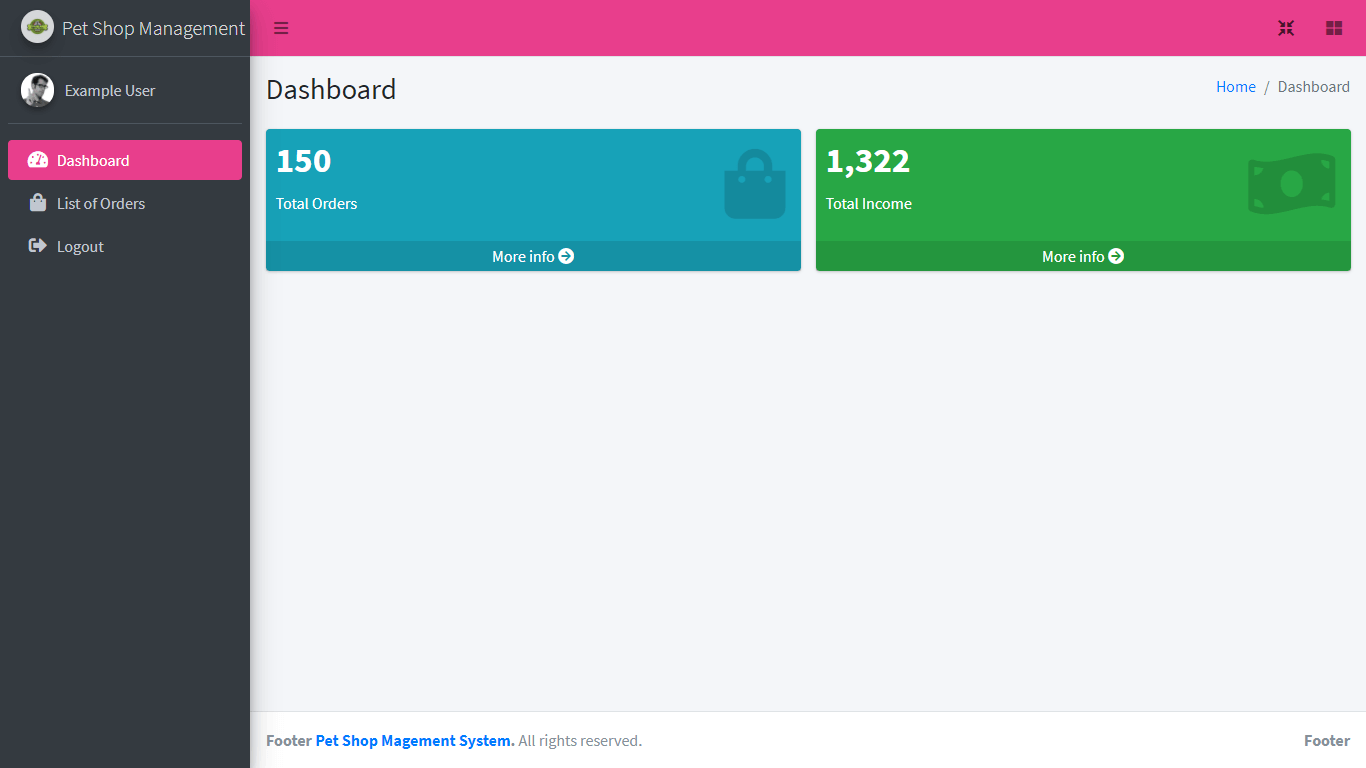
List of Orders – this form requires the information about the customer’s order.
The information needed to encode are the following:
- Reference No
- Customer name
- Item – combo box (product item)
- Quantity – number of items ordered
- Price
- Remarks
- Status – (approved, to deliver, received, cancelled)
Image shown below is the layout of the List of Orders form of the project.
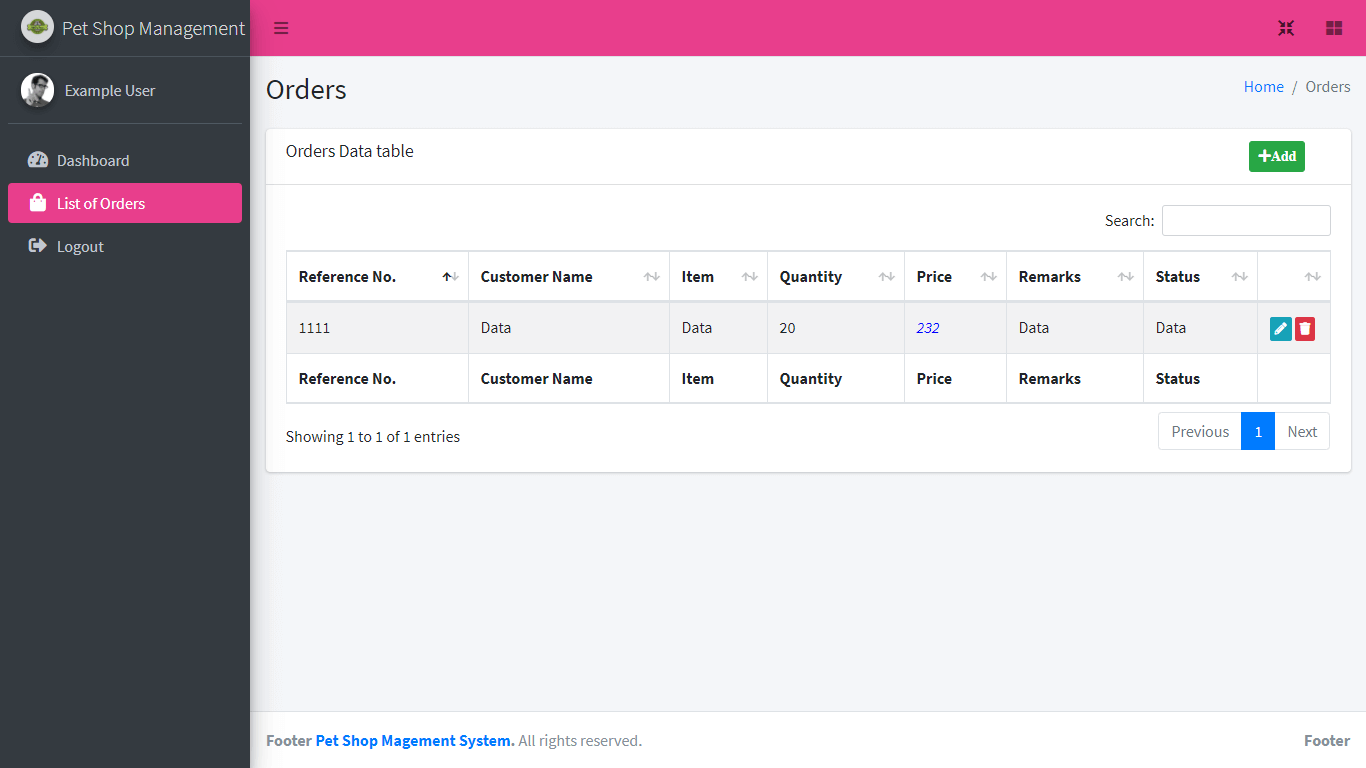
You may visit our Facebook page for more information, inquiries, and comments. Please subscribe also to our YouTube Channel to receive free capstone projects resources and computer programming tutorials.
Hire our team to do the project.
Related Links and Articles:
Pet Shop Management System ER Diagram
Pet shop Management System Database Design
Online Veterinary and Pet Shop Management Information System

